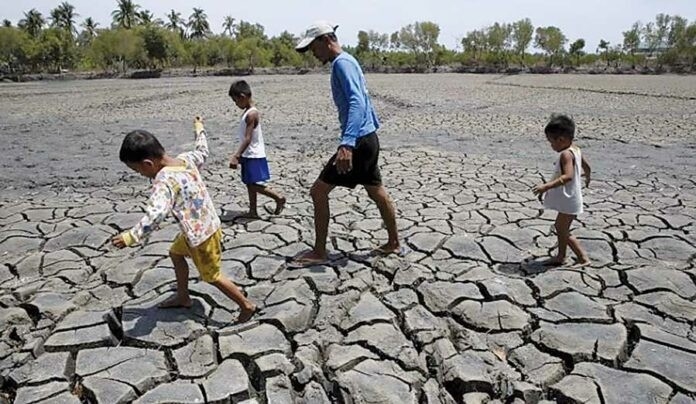Scientists from the US National Oceanic and Atmospheric Administration (NOAA) said that the El Nino climate pattern has officially returned, which will likely lead to extreme weather events this year such as tropical storms in the Pacific Islands, heavy rains in South America and drought in Australia.
After three consecutive years of La Nina, a climate pattern that typically cools global temperatures, El Nino has returned, with the equatorial Pacific Ocean experiencing above-average temperatures last month. Depending on its strength, El Nino can affect weather in a number of ways, including increasing the risk of heavy rains and droughts in some parts of the world, NOAA climate scientist Michelle L'Heureux said. Climate change can exacerbate or lessen some of the effects of El Nino, for example, El Nino can lead to record-breaking temperatures, especially in places that are already experiencing above-average temperatures during this period. This week, Australia warned that El Nino could be bringing hotter, drier days to the country, which is already at high risk of wildfires, while Japan said El Nino was partly responsible for its record-breaking spring.
 |
The World Meteorological Organization predicts a 70-80% chance of El Nino occurring between July and September. Illustration photo: Reuters |
NOAA said El Nino's influence in the United States will remain weak through the summer, but it will strengthen from late fall into spring. By winter, there is an estimated 84% chance that El Nino will develop to "above average" strength and a 56% chance that it will develop to its strongest strength, which will cause sea surface temperatures in the eastern Pacific Ocean to be at least 1.5 degrees Celsius above normal. This will result in wetter-than-normal weather in parts of the United States, from Southern California to the Gulf of Mexico, while the Pacific Northwest and Ohio Valley will be drier. El Nino also increases the chance of above-average temperatures in parts of North America. El Nino activity was also included in NOAA's hurricane forecast last month.
Hot, dry weather, the early signs of El Nino, is worrying food producers across Asia, while farmers in the Americas are counting on heavy rains to ease the impact of severe drought. El Nino could cut Australia’s winter harvest by 34% from record highs. The phenomenon is also affecting palm oil and rice production in Indonesia, Malaysia and Thailand.
Most of the hottest years on record have been during El Nino, which causes warmer-than-normal sea surface temperatures in the central and eastern Pacific Ocean near the equator. The last El Nino was in 2018-2019. Scientists are concerned that this summer and next could set record temperatures on land and at sea.
THANH SON (synthesis)
Source






![[Video] Many universities lower their minimum scores: Be careful with “low scores, high standards”](https://vphoto.vietnam.vn/thumb/1200x675/vietnam/resource/IMAGE/2025/7/25/f91e64a5fa2c4a86a3b57997e5b263fc)
























![[Photo] Signing of cooperation between ministries, branches and localities of Vietnam and Senegal](https://vphoto.vietnam.vn/thumb/1200x675/vietnam/resource/IMAGE/2025/7/24/6147c654b0ae4f2793188e982e272651)






































































Comment (0)